Mahabalipuram is a small town 60 kilometres south of Chennai (Madras) in the state of Tamil Nadu. It is named after the demon king Mahabali. But the place is also called Mamallapuram, after the Pallava king Mamalla (officially Narasimhavarman). And that Pallava dynasty is what this town is all about. Since 1984, a number of monuments have been on UNESCO’s World Heritage List. The main attraction is the Shore Temple. This dates back to the 7th century AD and has been preserved in good condition.
Are you planning a visit to Mahabalipuram? And would you like to learn more about the special history and culture of this historic place in the state of Tamil Nadu, India? In this travel guide, I’ll tell you more about its interesting history, read all about the best attractions and discover the best accommodation in this town. A history-rich visit to Mahabalipuram starts here…
This Travel Guide to Mahabalipuram contains affiliate links. This means that if you make a booking through one of the links on this website, Travel4history gets a small compensation for it. This does not cost you anything extra by the way!
*This article is also available in Dutch – Mahabalipuram Reisgids
What would you like to know about Mahabalipuram, India?
- History – A journey through the past
- Sightseeing – 3 historical places in Mahabalipuram
- Accommodation – Where to stay?
- Transport – How to get there?
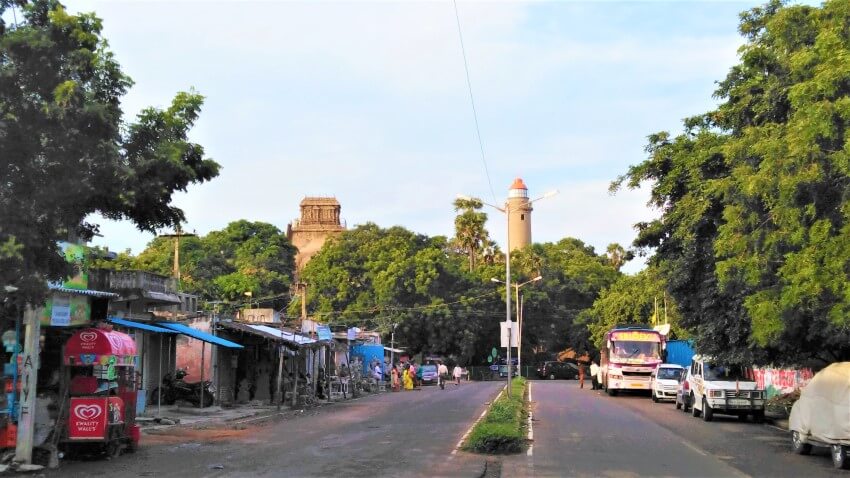
Practical information
Best Time to Travel? The best time to visit this quaint town on India’s east coast is between November and May. In October, the monsoon ends and the dry season begins in Tamil Nadu. The temperature is also more pleasant then than in the summer months.
How many days? In half a day you can have seen the main sights of this place. If necessary, you could combine this with a few hours on the beach.
History Mahabalipuram – A journey through the past
Below you will find a short overview of the most important historical events of Mahabalipuram. These mainly took place between the 3rd century and the 9th century A.D. when the Pallavady dynasty was in power. It is remarkable that many sights from that time are still quite well preserved today.
275 A.D – Fall of one empire leads to happiness in a new dynasty
The Satavahana dynasty reigns from 230 BC until the third century AD. It consisted of a large part of today’s middle India. In the third century A.D. the empire falls apart through mutual struggle and fighting states. The Pallavadynasty was born…
6th and 7th century -Heyday of the empire
The sixth and seventh centuries A.D. are the heydays of the Pallavady dynasty. It was a centre for art and culture under the direction of Mahendravarman I (600-630 A.D.). The Shore Temple, something that will be discussed further on, became one of the most important buildings of the empire. The Chinese monk Xuanzang visited India in the 7th century and called the inhabitants of this area ‘benign’.
897 A.D. – Hostility and downfall
The Pallavas were in constant conflict with neighbouring states. Finally, they were defeated by the Chola’s in the ninth century. This dynasty even extended their influence to parts of Malaysia and Indonesia.
2004 – Tsunami exposes new artifacts
In 2004 a tsunami in Asia caused death and destruction and many people died. In fact, in Mahabalipuram it led to the discovery of various attributes from the time of the Pallavady dynasty, such as the discovery of a lion. The important shore temple remained virtually undamaged by the Tsunami.
Pavalladynasty and the Dravidian architecture?
The Pavallady dynasty developed an architecture that we today call ‘Dravidian’. Dravidians is a collective term for people who speak Dravidian languages, mostly people in the south of India and parts of Sri Lanka. There is quite a difference between the Dravidian architecture and how the temples in the north were made.
Characteristic for the architecture of the Pavalla’s was that they carved many temples and statues out of granite or stone. These rectangular temple complexes also have a Gopuram, an entrance gate in the shape of a pyramid. The temples were also a part of life and social, religious and political matters were discussed here. And take a good look at all the decorations you come across in and around the temples. Impressively beautiful, isn’t it?
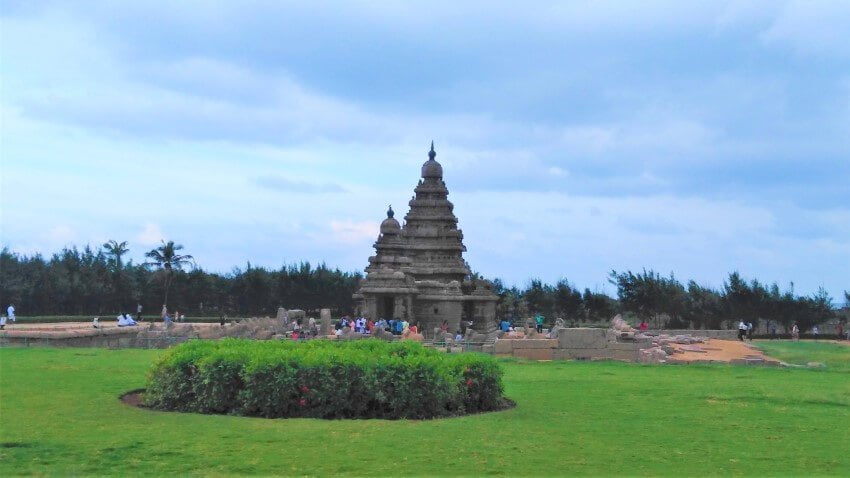
Sights – 3 historical attractions in Mahabalipuram
If you want to visit the main sights of this place, you will have to buy a ticket for it. It is best to do this at the Shore Temple. But for those who do not want to spend 7 dollars it is also possible to view the temples from outside the fence. At least the Pancha Rathas, which is only a low fence from where you can take great pictures. Okay, you just can’t touch them…
1: Shore Temple, most famous sanctuary of the Pallavas
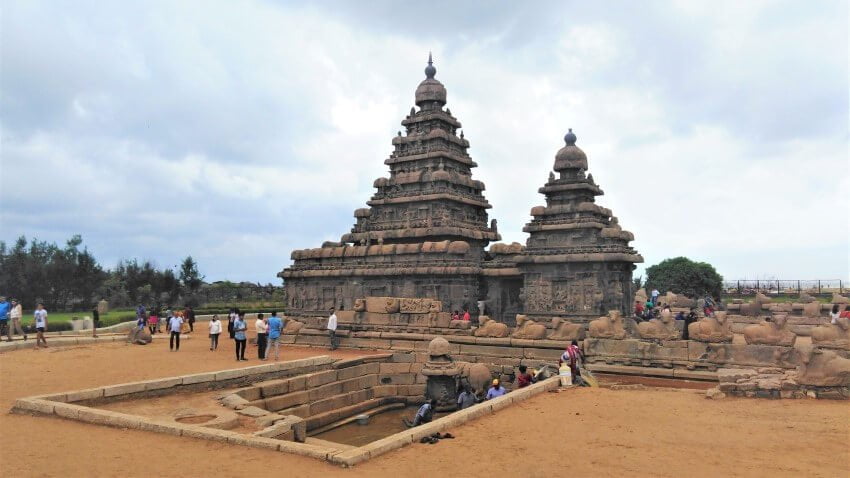
The highlight of the architecture of the Pallavadynasty is the Shore Temple. This temple is more than 1300 years old and stands, surprisingly, on the coast. One sanctuary is dedicated to the god Shiva and the other to the god Vishnu. It was built in the eighth century by King Narasimhavarman II and has been on the World Heritage List since 1984. Like the rest of the sights below…
2: Pancha Rathas
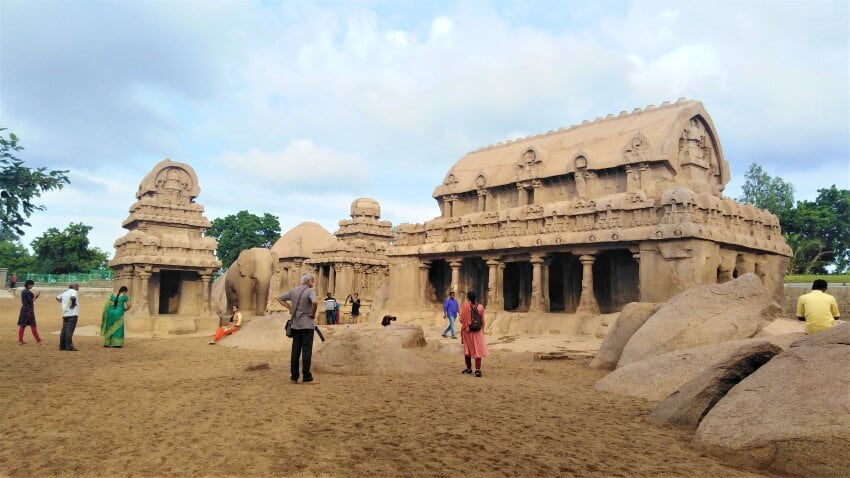
The Pancha Rathas is located 1 kilometre south of the centre of Mahabalipuram. It is a Hindu temple complex and was built at the time of King Mahendravarman (600-630). All the temples here are carved from a single piece of granite. Each of these temples was dedicated to a god, but now named after one of Pandu’s sons, the pandavas. They play the leading role in the extensive Hindu Mahabharata story. In addition, you will also find an impressive elephant and a lion. At the time of the Pallavady dynasty these were mainly used as decoration.
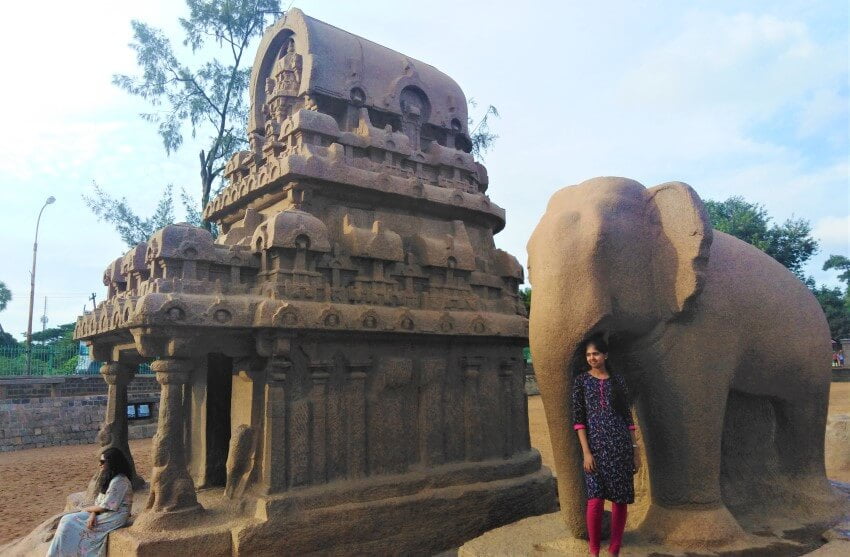
3. Other impressive monuments of the Pallavady dynasty
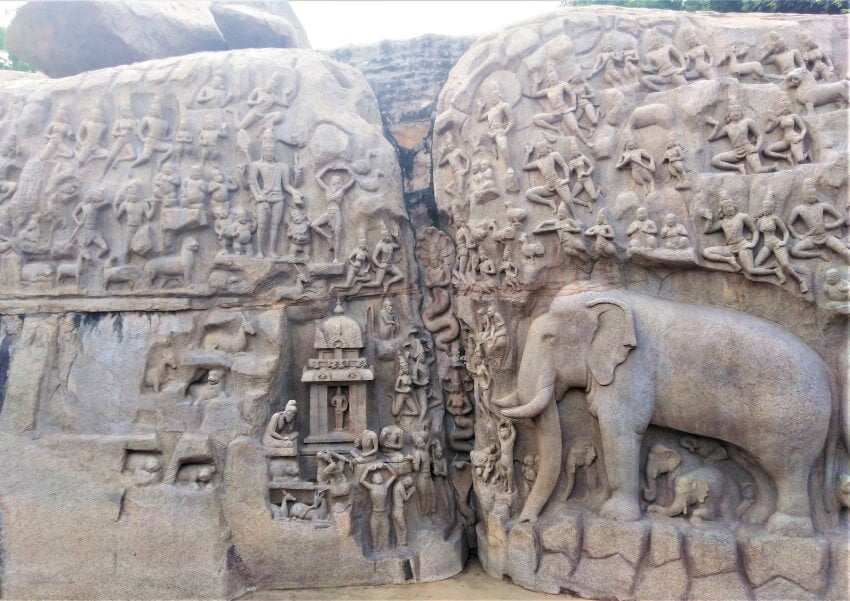
In the west of the centre of Mahabalipuram you will find Mamallapuram Hill. Here you van find some beautiful examples of Dravidian architecture from the time of the Pallavady dynasty. Arjuna’s Penance is an example of this. There are several interpretations of this structure described. One is about the penance of Arjuna (did you find him?), the third son of Pandu and the other is about the descent from the river Ganges to earthly life.
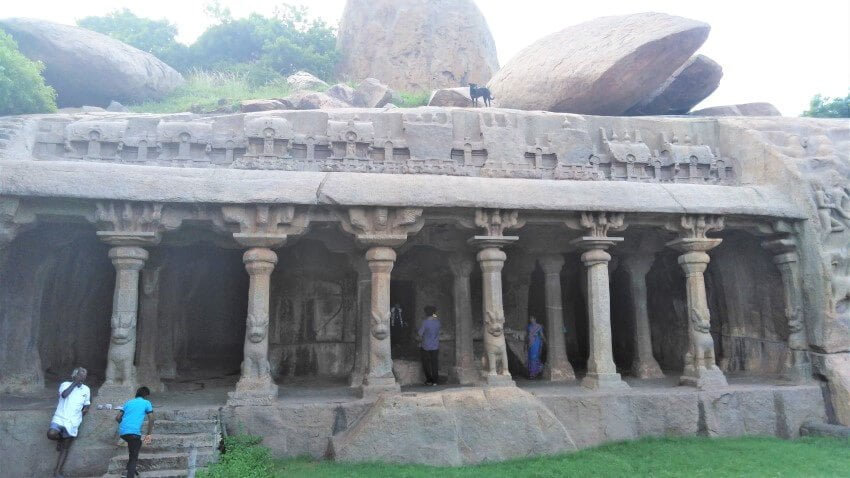
There are also a number of special caves here. Also in these caves you will find a lot of carved scenes from the Mahabharata. Mamallapuram Hill is only a small hill and free to visit! Especially nice for those who want to see more caves, reliefs and monuments….
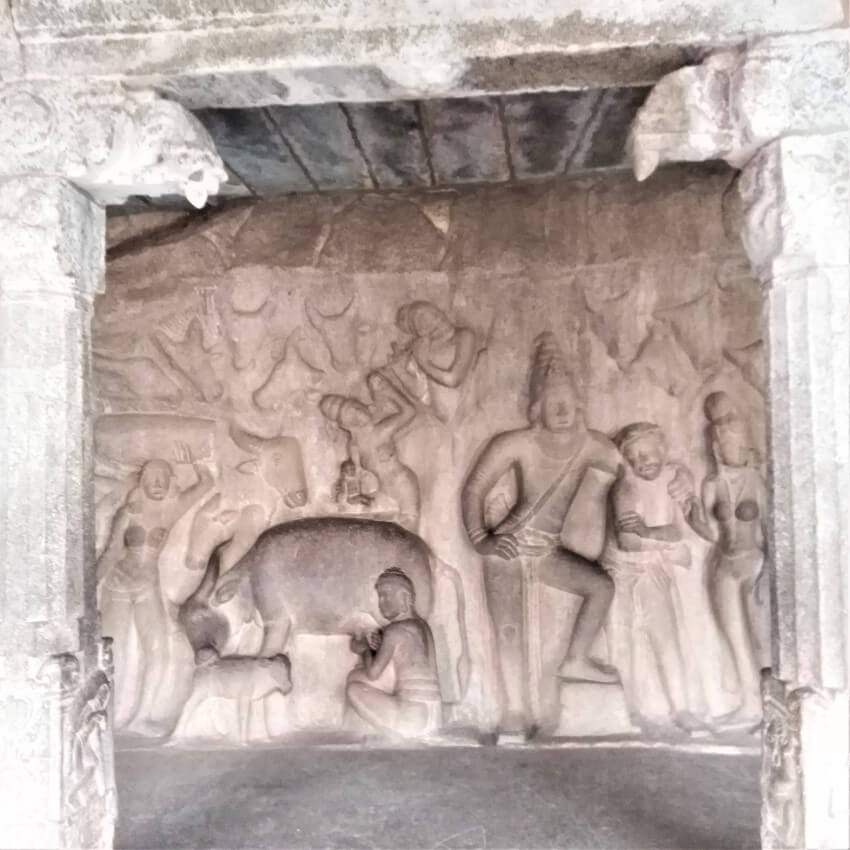
Accommodation – Where to stay in Mahabalipuram?
Mamallapuram is a coastal town of about 20,000 inhabitants. For tourists going from Chennai to Poducherry it is an ideal stopover to visit some of the most important Unesco World Heritage temples. In general, one night’s stay here is sufficient, but an extra night to relax in this town is not exactly a punishment either.
Looking for accommodation? Click here for hotels or guesthouses in Mahabalipuram, India
Tip: There are many different budget options in the centre of Mahabalipuram. Rajalakshmi Guesthouse is a colourful accommodation with basic rooms for about 10 dollar per night.
Transportation – How to get to Mahabalipuram?
Plane: The nearest airport is Chennai Airport. It is located about 50 kilometers north of Mahabalipuram. The best way to get to Mamallapuram is by taxi. Or you have to get to T. Nagar bus station first and then follow the next description:
Bus: In the past there was a direct bus from T. Nagar bus station to Mahabalipuram, bus 599. Since 2018 it changed and the best option is to take a bus (519) to Thiruporur bus station. From there a bus (515) goes directly to Mamallapuram. It doesn’t stop at the bus station, but along the road. The locals will kindly show you this bus.
Next destination? The capital of the Pallavadynasty was Kanchipuram and is located 65 kilometers west of Mahabalipuram. If you can’t get enough of historic temples and buildings then this is your next destination.
And what is your opinion about Mahabalipuram? If you have any more tips and ideas, feel free to leave a message below!